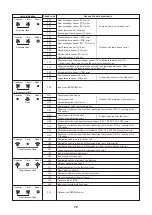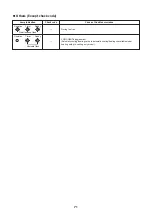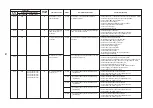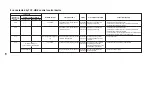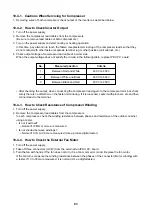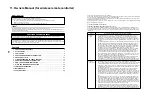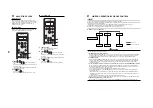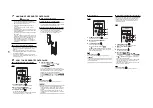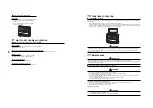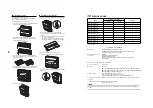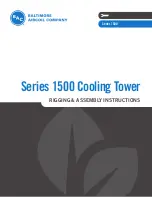
10
-4-1. Cautions When Servicing for Compressor
1. Removing wires of both compressors check output of the inverter as described below.
10
-4-2. How to Check Inverter Output
1. Turn off the power supply.
2. Remove the compressor lead cables from the compressors.
(Be sure to remove lead cables of both compressors.)
3. Turn on the power supply and start cooling or heating operation.
In this time, pay attention to touch the fasten receptacle terminal lug of the compressor leads so that they
do not contact with other fasten receptacle terminal lug or other position (unit cabinet, etc.).
4. Check output voltage of compressor lead cable at inverter side.
When the output voltage does not satisfy the criteria in the following table, replace IPDU P.C. board.
∗
After checking the output, when connecting the compressor lead again to the compressor terminal, check
surely there is no distortion on the fasten terminal lug. If it is loosened, caulk it with pinchers, etc and then
connect lead to the terminal.
10
-4-3. How to Check Resistance of Compressor Winding
1. Turn off the power supply.
2. Remove the compressor lead cables from the compressors.
In each compressor, check the winding resistance between phases and resistance of the outdoor cabinet
using a tester.
• Is not it earthed?
→
Normal if 10M
Ω
or more are measured
• Is not shorted between windings?
→
Normal if 0.7
Ω
to 0.9
Ω
are measured (Use a precise digital tester.)
10
-4-4. How to Check the External Fan Motor
1. Turn off the power supply.
2. Take off three connectors (U.V.W) from the external fan IPDU P.C. board.
3. Turn the fan with hands. If the fan does not turn, it is a fan motor error (Lock). Replace the fan motor.
If the fan turns, measure the winding resistance between the phases of the connector (Motor winding) with
a tester. If 13 to 33
Ω
are measured, it is normal. (Use a digital tester.)
No.
1
2
3
Measured position
Between Red and White
Between White and Black
Between Black and Red
Criteria
400 V to 650 V
400 V to 650 V
400 V to 650 V
83


